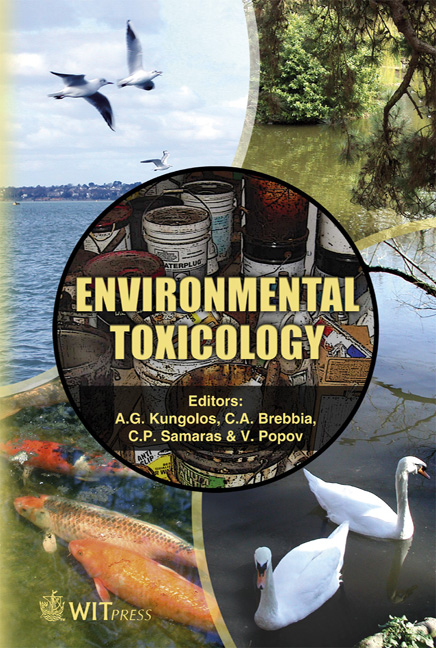Toxicity And Biodegradation Potential Of Waste Water From Industry Producing Fire Protection Materials
Price
Free (open access)
Transaction
Volume
10
Pages
7
Published
2006
Size
336 kb
Paper DOI
10.2495/ETOX060281
Copyright
WIT Press
Author(s)
T. Tišler, M. Cotman & J. Vrtovšek
Abstract
Effluents may contain hazardous chemicals, which could have adverse effects on aquatic ecosystems. Important intrinsic properties are toxicity and biodegradability of effluents and they should be assessed in order to protect the aquatic environment. Microorganisms of activated sludge are responsible for biological waste water treatment. The lack of treatment effectiveness could, in case of unexpected toxic influents to waste water treatment plants, lead to a discharge of toxic and undegradable effluents into receiving streams. The assessment of potential adverse effects of influents entering the waste water treatment plant is for this reason necessary. The aim of the study was to predict a suitability of discharging the industrial waste water into waste water treatment plants based on the assessment of waste water toxicity and biodegradability. The waste water sample, originating from the industry producing fire protection materials, was highly polluted with organic substances. At first, the acute toxicity of the investigated sample was determined using activated sludge measuring oxygen consumption rates. It was found that the waste water sample was acutely toxic to microorganisms. Ready biodegradability of waste water was determined in a closed respirometer by measuring oxygen consumption. As diluted samples of the waste water were not readily biodegradable inherent biodegradability of the waste water sample was evaluated using the Zahn-Wellens test. It was found that diluted samples were inherently biodegradable probably due to the fact that higher concentration of microorganisms of activated sludge was added. It can be concluded that the tested waste water could be discharged into the sewerage system on the condition that a dilution of the tested waste water in the municipal waste water treatment plant would be at least 1:20. Keywords: activated sludge, industrial waste water, inherent biodegradability, oxygen consumption, ready biodegradability, toxicity, Zahn-Wellens test, waste water treatment plant.
Keywords
activated sludge, industrial waste water, inherent biodegradability, oxygen consumption, ready biodegradability, toxicity, Zahn-Wellens test, waste water treatment plant.





